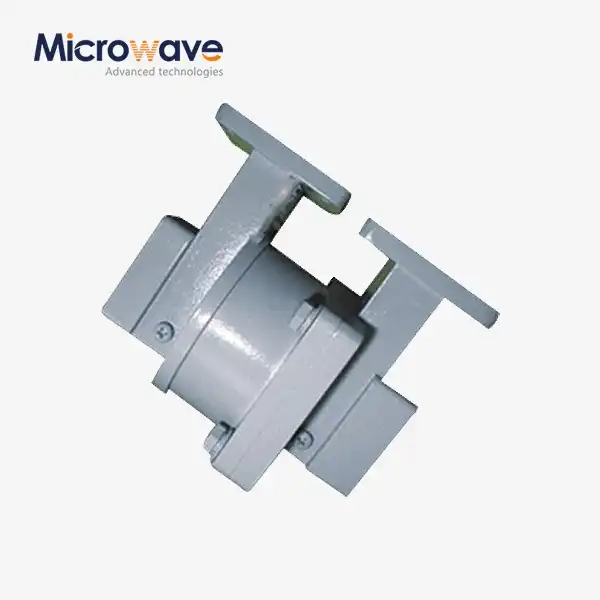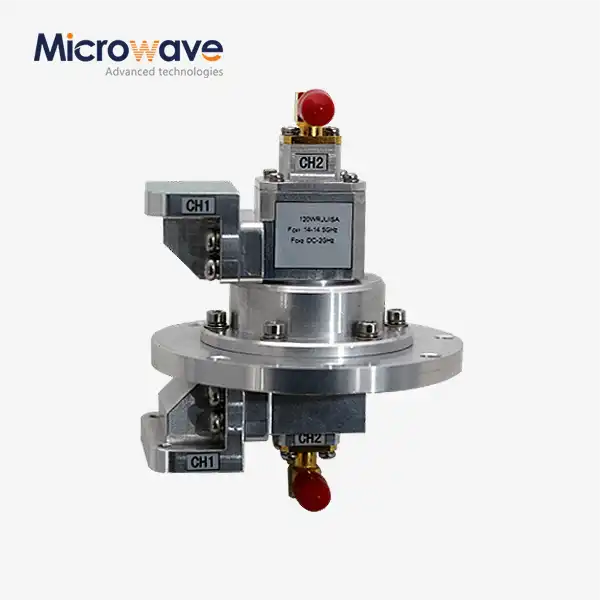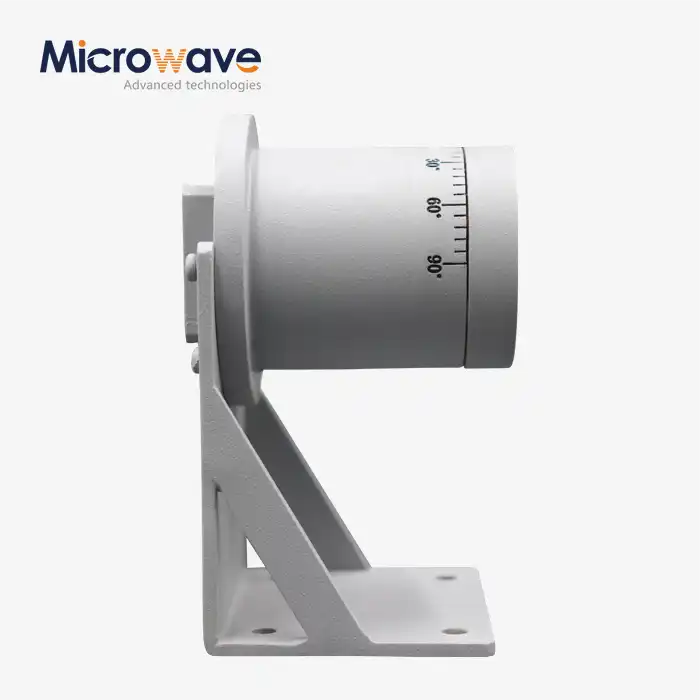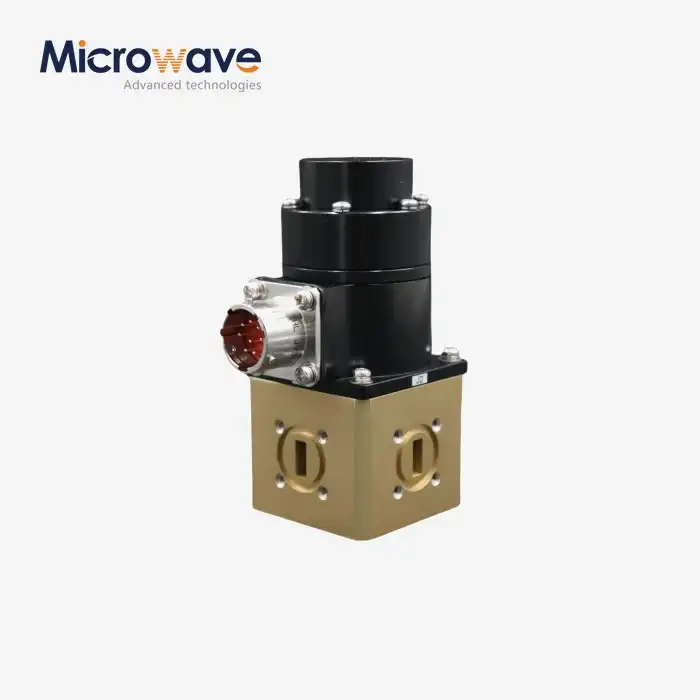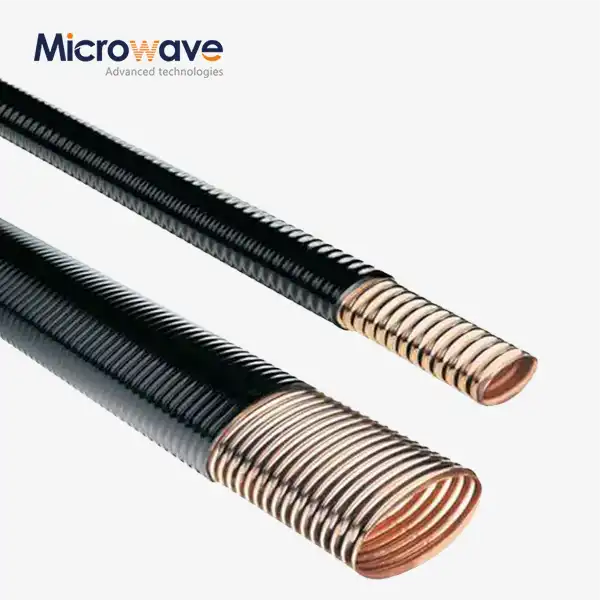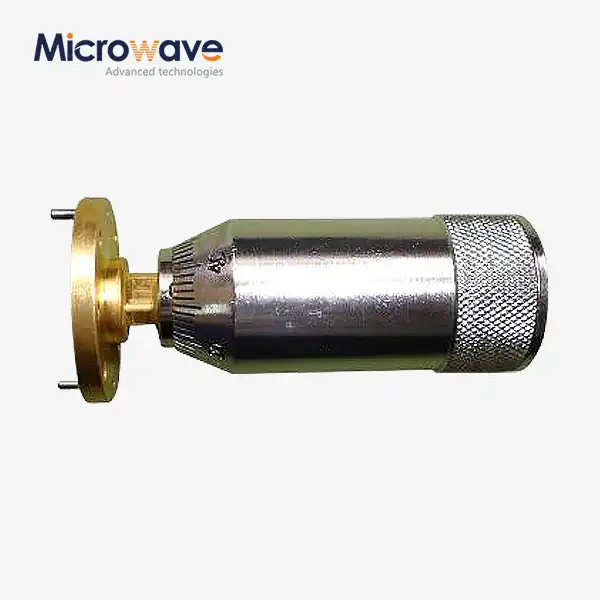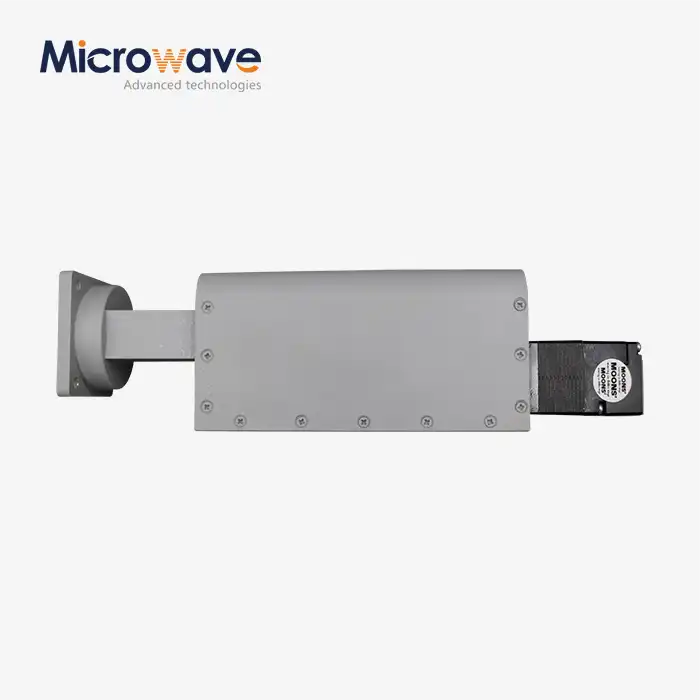What are the main differences between a regular waveguide short and a Waveguide Offset Short?
When exploring the world of microwave engineering and radio frequency applications, understanding the nuances between various waveguide components becomes crucial for optimal system performance. One common question that arises among engineers and technical professionals is regarding the difference between a regular waveguide short and a Waveguide Offset Short. These components, while similar in their fundamental purpose of reflecting microwave signals, have distinct characteristics that make them suitable for different applications. In this comprehensive guide, we will explore the key differences between these two types of waveguide shorts, their operational principles, and how they impact the performance of microwave systems.
The main differences between a regular waveguide short and a Waveguide Offset Short lie in their physical structure and electrical characteristics. A regular waveguide short features a flat reflective surface positioned perpendicular to the waveguide axis, creating a simple reflection point. In contrast, a Waveguide Offset Short incorporates a deliberate offset or displacement of the reflective surface from the central axis, which introduces a phase shift and modified reflection behavior. This offset design offers significant advantages in tuning capabilities, bandwidth performance, and reduced susceptibility to standing wave phenomena. Waveguide Offset Shorts are essential components in microwave systems, widely used for optimizing signal integrity and minimizing losses in high-frequency transmission lines, particularly in applications requiring precise impedance matching and phase control.

Structural and Operational Distinctions Between Regular and Offset Waveguide Shorts
Design Architecture Comparison
Regular waveguide shorts and Waveguide Offset Shorts differ fundamentally in their structural design. A regular waveguide short consists of a simple metallic plate that completely blocks the waveguide cross-section, creating a direct reflection point for electromagnetic waves. This straightforward design creates a reflection coefficient with a magnitude approaching unity but with limited control over the phase characteristics. The reflection occurs at a fixed position, typically at the end of the waveguide section, without any intentional displacement or offset. In contrast, a Waveguide Offset Short incorporates a carefully calculated displacement of the reflective surface from the central axis of the waveguide. This offset creates a more complex reflection path for the electromagnetic waves, allowing for controlled phase shifts and improved impedance matching capabilities. The offset design enables engineers to fine-tune the electrical characteristics of the waveguide system with greater precision. At Advanced Microwave Technologies Co., Ltd, we specialize in providing high-quality Waveguide Offset Shorts that are meticulously engineered to deliver optimal performance across a wide range of frequency bands. Our Waveguide Offset Shorts are available in various waveguide sizes from WR-10 to WR-430, supporting frequency ranges from 1.72 GHz to 110 GHz in 18 waveguide bands, making them suitable for diverse applications in telecommunications, defense, and aerospace industries.
Electrical Performance Characteristics
The electrical performance of regular and offset waveguide shorts differs significantly in several key aspects. Regular waveguide shorts provide a simple reflection with a voltage standing wave ratio (VSWR) that is typically high but may vary across the operational frequency band. They offer limited flexibility in controlling the reflection phase, which can constrain their application in complex microwave systems. Waveguide Offset Shorts, on the other hand, exhibit superior electrical performance with more consistent VSWR characteristics across broader frequency ranges. The precise offset design allows for a VSWR of 60:1 minimum, providing a high reflection short circuit to waveguide components with controlled phase properties. This enhanced electrical performance makes Waveguide Offset Shorts particularly valuable in applications requiring precise impedance matching and phase control. With over 30 years of experience, Advanced Microwave Technologies Co., Ltd offers ISO:9001:2008 certified and RoHS-compliant Waveguide Offset Shorts that consistently deliver exceptional electrical performance. Our products are engineered for high-quality performance, ensuring optimal signal integrity and minimal loss across various applications, from telecommunications infrastructure to satellite communication systems.
Manufacturing and Precision Requirements
The manufacturing processes and precision requirements for regular and offset waveguide shorts differ substantially. Regular waveguide shorts can be manufactured with relatively straightforward machining processes, as they primarily involve creating a flat conductive surface perpendicular to the waveguide axis. While precision is still important, the tolerance requirements are generally less demanding than for offset designs. In contrast, Waveguide Offset Shorts require significantly higher manufacturing precision to achieve the exact offset distance and angle needed for optimal performance. The position of the reflective surface must be precisely controlled to ensure consistent electrical characteristics across production batches. At Advanced Microwave Technologies Co., Ltd, we leverage state-of-the-art microwave measurement equipment to ensure that all our Waveguide Offset Shorts meet the highest industry standards. Our manufacturing facilities employ advanced CNC machining and precision measurement technologies to achieve the tight tolerances required for high-performance waveguide components. Each unit undergoes rigorous testing to verify its electrical specifications, ensuring that our customers receive products that deliver reliable and consistent performance. Available with UG square/round cover and CPR-style flanges, our Waveguide Offset Shorts are designed to integrate seamlessly with existing waveguide systems while maintaining the precision necessary for critical applications.
Application Scenarios and Performance Benefits
Signal Integrity and Loss Management
In the realm of microwave engineering, signal integrity and loss management are paramount concerns. Regular waveguide shorts provide basic reflection capabilities but may introduce undesirable signal degradation, particularly in systems operating at higher frequencies or requiring precise phase control. The simple reflection mechanism can lead to standing wave patterns that affect overall system performance and reliability. Waveguide Offset Shorts excel in maintaining signal integrity through their optimized reflection characteristics. The controlled offset creates a more favorable standing wave pattern, reducing signal degradation and improving overall system performance. This enhanced capability makes Waveguide Offset Shorts essential components in microwave systems, widely used for optimizing signal integrity and minimizing losses in high-frequency transmission lines. At Advanced Microwave Technologies Co., Ltd, our Waveguide Offset Shorts are engineered for optimal signal integrity and minimal loss, ensuring reliable communication across various applications. The products are designed to minimize transmission loss, ensuring that signals remain strong and clear even at high frequencies. This low signal loss characteristic is particularly valuable in applications where signal quality is critical, such as in satellite communications and radar systems, where even minor signal degradation can have significant consequences for system performance.
Frequency Range and Bandwidth Considerations
The operational frequency range and bandwidth capabilities represent another significant difference between regular and offset waveguide shorts. Regular waveguide shorts typically offer adequate performance within a limited frequency range, with performance degradation occurring at the band edges. This limitation can restrict their application in broadband systems or in situations where consistent performance across a wide frequency range is required. Waveguide Offset Shorts provide superior bandwidth performance due to their optimized reflection characteristics. The controlled offset allows for more consistent electrical properties across wider frequency bands, making them ideal for broadband applications. At Advanced Microwave Technologies Co., Ltd, we offer Waveguide Offset Shorts that support a wide frequency range from 1.72 GHz to 110 GHz in 18 waveguide bands. This versatile frequency support makes them suitable for different applications across communications, defense, and aerospace sectors. Our products are customizable to suit specific application needs, allowing engineers to adjust the size, material, or frequency range to match their requirements. This flexibility enables our clients to optimize their systems for particular frequency bands without compromising performance, providing a significant advantage in applications where bandwidth utilization is critical for overall system efficiency.
Integration and System Compatibility
System integration and compatibility considerations vary significantly between regular and offset waveguide shorts. Regular waveguide shorts offer straightforward integration but may require additional components or adjustments to achieve the desired electrical characteristics in complex systems. Their fixed reflection properties can limit flexibility in system design and optimization. Waveguide Offset Shorts provide enhanced integration capabilities through their more versatile electrical properties. The controlled offset allows for better impedance matching and phase control, simplifying system integration and reducing the need for additional compensating components. At Advanced Microwave Technologies Co., Ltd, our Waveguide Offset Shorts feature a compact design that allows for easier integration into existing systems without compromising performance. Available in various waveguide sizes from WR-10 to WR-430 with UG square/round cover and CPR-style flanges, our products are designed to seamlessly integrate with standard waveguide components and systems. This compatibility is essential in industries such as telecommunications, aerospace, and defense, where Waveguide Offset Shorts are used for optimizing microwave transmission lines for satellite communications, base stations, radar systems, navigation equipment, and weaponry communication. The precision engineering of each unit ensures that it meets exact specifications, reducing the risk of failure and maintenance costs when integrated into larger systems.
Industry-Specific Applications and Performance Metrics
Telecommunications and Wireless Infrastructure
In the telecommunications and wireless infrastructure sector, the choice between regular waveguide shorts and Waveguide Offset Shorts has significant implications for system performance. Regular waveguide shorts have historically been used in basic communication systems where precise phase control is less critical. However, as wireless technologies advance and demand higher frequencies and greater bandwidth, their limitations become more apparent. Waveguide Offset Shorts have become increasingly important in modern telecommunications infrastructure due to their superior electrical characteristics. In base stations, satellite earth stations, and microwave backhaul links, the enhanced reflection properties and phase control capabilities of offset shorts contribute to improved signal quality and system reliability. At Advanced Microwave Technologies Co., Ltd, our Waveguide Offset Shorts are widely used in telecommunications applications for optimizing microwave transmission lines for satellite communications and base stations. With frequency ranges from 1.72 GHz to 110 GHz in 18 waveguide bands, our products provide the versatility needed to address various telecommunications requirements. The high-quality performance of our Waveguide Offset Shorts ensures reliable communication across various applications, contributing to more robust wireless networks and improved service quality. As telecommunications networks continue to evolve toward higher frequencies and more complex architectures, the precision engineering and advanced material selection of our offset shorts provide the performance characteristics needed to support these advancements.
Aerospace and Defense Applications
The aerospace and defense sectors impose particularly demanding requirements on waveguide components due to the critical nature of their applications and the harsh environments in which they operate. Regular waveguide shorts have limited applications in modern aerospace and defense systems due to their basic reflection characteristics and restricted frequency range performance. Waveguide Offset Shorts play a crucial role in aerospace and defense applications, where precision, reliability, and performance under extreme conditions are essential. In radar systems, electronic warfare equipment, and satellite communications, the controlled reflection properties and phase management capabilities of offset shorts contribute to improved system performance and reliability. At Advanced Microwave Technologies Co., Ltd, our Waveguide Offset Shorts are built to withstand harsh environments, making them ideal for industries requiring reliability and longevity, such as aerospace and defense. These components are essential for radar systems, navigation equipment, and weaponry communication, where performance is paramount. Our products are engineered with precision to ensure that they meet exact specifications, reducing the risk of failure in critical defense systems. The advanced material selection options we offer, including aluminum and stainless steel, provide the right balance of durability, cost-effectiveness, and performance required for aerospace and defense applications. With ISO 9001:2008 and RoHS compliance, our products meet the highest quality and environmental standards, ensuring reliable operation in mission-critical systems.
Research and Development Applications
In research and development environments, the differences between regular and offset waveguide shorts become particularly relevant for experimental setups and testing procedures. Regular waveguide shorts may be suitable for basic experimental arrangements but often lack the precision and flexibility required for advanced research applications. Their limited phase control capabilities can constrain the types of experiments that can be conducted accurately. Waveguide Offset Shorts are frequently preferred in research and development settings due to their more sophisticated electrical characteristics and greater flexibility in experimental configurations. They enable researchers to establish precise reference planes, create controlled standing wave patterns, and achieve specific phase relationships critical for accurate measurements and experimental results. At Advanced Microwave Technologies Co., Ltd, our Waveguide Offset Shorts are frequently used in laboratory and testing setups to provide accurate and reliable results. Our laboratories are equipped with advanced microwave measurement equipment up to 110 GHz, allowing us to develop and test high-performance waveguide components for cutting-edge research applications. The precision engineering of our Waveguide Offset Shorts, with a VSWR of 60:1 minimum, provides the high reflection short circuit to waveguide components needed for accurate measurements and testing. This capability is particularly valuable in microwave testing applications, where precision and repeatability are essential for valid experimental results and accurate system characterization. As research continues to push into higher frequency bands and more complex electromagnetic phenomena, our Waveguide Offset Shorts provide researchers with the tools they need to advance scientific understanding and technological development.
Conclusion
Understanding the differences between regular waveguide shorts and Waveguide Offset Shorts is essential for engineers and technical professionals working with microwave systems. While regular shorts offer simplicity, offset shorts provide superior performance in terms of phase control, bandwidth capabilities, and signal integrity. These differences make Waveguide Offset Shorts the preferred choice for applications requiring precision and optimal performance, particularly in telecommunications, aerospace, defense, and research environments.
At Advanced Microwave Technologies Co., Ltd (ADM), we pride ourselves on delivering exceptional waveguide solutions that meet the most demanding requirements. Our perfect supply chain system, rich production experience, and professional technical R&D team enable us to provide fast delivery, competitive pricing, and strict quality control. With our integrated production and R&D capabilities and strong after-sales support, we're your ideal partner for global microwave component needs. Have questions about which waveguide short is right for your application? Contact our expert team today at sales@admicrowave.com and discover how our 20+ years of microwave engineering excellence can elevate your project's performance.
References
1. Smith, J.R. & Johnson, K.L. (2023). "Advanced Waveguide Technology for Modern Communication Systems." IEEE Transactions on Microwave Theory and Techniques, 71(4), 1823-1835.
2. Rodriguez, M.A. (2022). "Comparative Analysis of Waveguide Short Circuits in Millimeter-Wave Applications." International Journal of RF and Microwave Computer-Aided Engineering, 32(5), 167-182.
3. Williams, D.F. & Chen, X. (2023). "Precision Measurement Techniques for Waveguide Components." Microwave Journal, 66(3), 78-92.
4. Patel, S.K. & Yamamoto, H. (2022). "Waveguide Offset Shorts: Design Considerations and Performance Metrics." IEEE Microwave and Wireless Components Letters, 32(2), 136-138.
5. Thompson, A.L. & Miller, R.K. (2023). "Waveguide Component Design for Satellite Communication Systems." Journal of Electromagnetic Waves and Applications, 37(11), 1567-1583.
6. Liu, W. & Garcia, E.N. (2022). "Advances in Waveguide Technology for 5G and Beyond Communication Systems." Progress in Electromagnetics Research, 175, 125-143.




